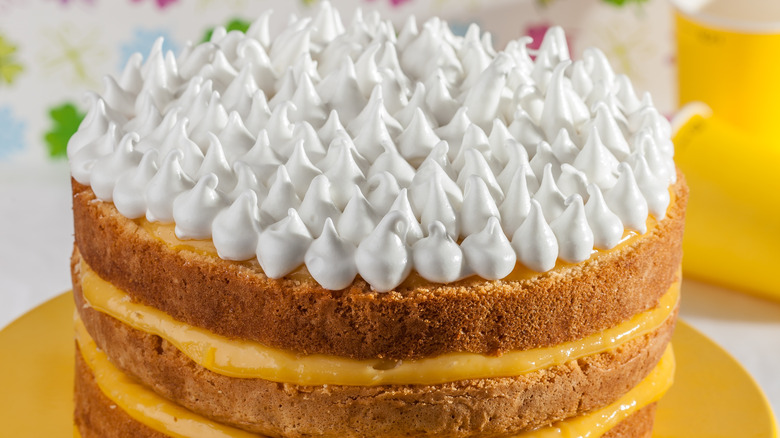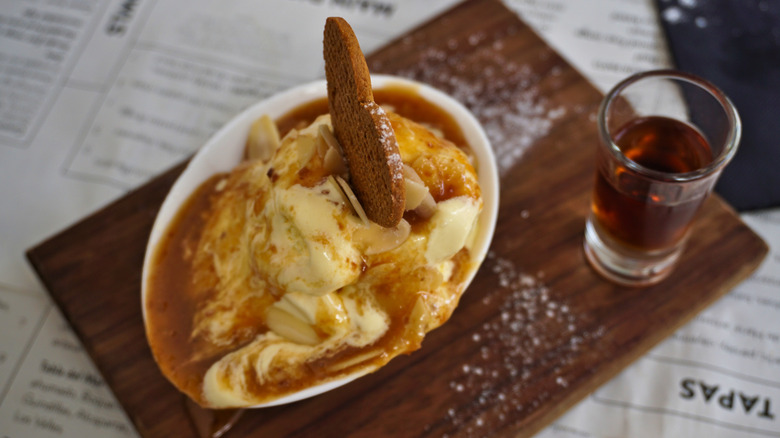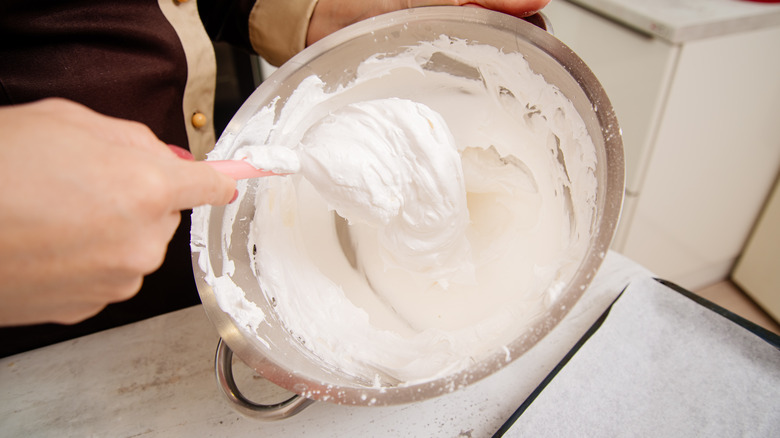Bienmesabe Is The Venezuelan Coconut Cake You Need To Know
Like many North, South, and Central American cuisines, Venezuela's many dishes are a culmination of the country's environment and a fusion of indigenous and colonial influences. Venezuelan mainstays like empanadas are adaptations of European-born recipes, while plantain dishes like tostones use cultivars brought via the African and Spanish slave trades.
Bienmesabe is a beloved dessert in Venezuela and a prime example of how foreign-born recipes transform into local treasures with the help of native crops and flavors. With a name that means "it tastes good to me" in Spanish, Bienmesabe is a sweet, creamy, tropical dessert with layers of liqueur-infused sponge cake, creamy coconut and vanilla custard, and a fluffy cinnamon meringue topping.
Bienmesabe is a Venezuelan adaptation of an old European dessert that utilizes native tropical ingredients and adopts culinary traditions from its Central and South American neighbors. Bursting with rich coconut and vanilla flavors and three separate layers of distinctly decadent textures, Bienmesabe is a dessert worthy of its name!
Historical background and cultural influences
Bienmesabe dates back to Spain during the Moorish occupation. Historians claim that the dish was brought to the country by the Moors, which is why its popularity remains relegated to Southern Spain and the Spanish Isles closest to North Africa. It originated as a simple custard or sauce consisting of honey, almond meal, and egg yolk. By the time Spanish colonists arrived in Central and South America, bienmesabe was already a well-established dessert.
The dessert evolved and expanded from an almond and honey custard to numerous, nearly unrecognizable variations with Peru, Puerto Rico, Panama, and Venezuela all laying claim to proprietary recipes. Venezuela swapped honey and almonds for sugar, vanilla, and coconut milk in its rendition of this historic custard. However, custard is just one layer of what has evolved into Venezuela's famous layered dessert. The other two layers are a rum-soaked sponge cake and a simple meringue sprinkled with cinnamon.
Coconuts are a reflection of Venezuela's tropical environment, vanilla is a Mexican cultivar, sugar is one of South America's biggest crops, and the rum used to soak the spongecake layer of Venezuelan bienmesabe originated in the Caribbean. Furthermore, syrup- or milk-soaked cake is a common delicacy around the Americas; Consider, for example, Mexican tres leches or Caribbean rum cake.
Ingredients and how it's made
Bienmesabe holds a special place in the hearts of Venezuelans, garnering fantastical nationalist origin stories as a labor of love that cures the heart and soul. It remains a labor of love made for holidays and special occasions in Venezuela. Making this dessert requires time, patience, and confectionary knowledge. The ingredient list is long, and each layer involves numerous steps, so Bienmesabe is a recipe for ambitious bakers. That said, once you try the fruits of your labor, it'll all be worth it!
Since you're making cake, meringue, and custard, you'll need nearly a dozen eggs for Bienmesabe. You can use white or coconut rum or just plain coconut milk for the simple syrup used to soak the cake. The cake itself is a yellow cake that you can make in a rectangular or square baking pan. Let it cool completely while you prepare the rum syrup, meringue, and custard cream. The custard is a blend of egg yolks, coconut milk, sugar, vanilla, and butter, whisked into a rich, thick consistency. The meringue is a simple mixture of whipped egg whites with sugar and cinnamon.
Once you've made each layer separately, you can infuse the cake with rum syrup and begin to layer each ingredient. The custard traditionally goes on top of the cake in a thick layer with shredded coconut, over which you gently spread the meringue. You can then garnish the cake with cinnamon, shredded coconut, or both.


